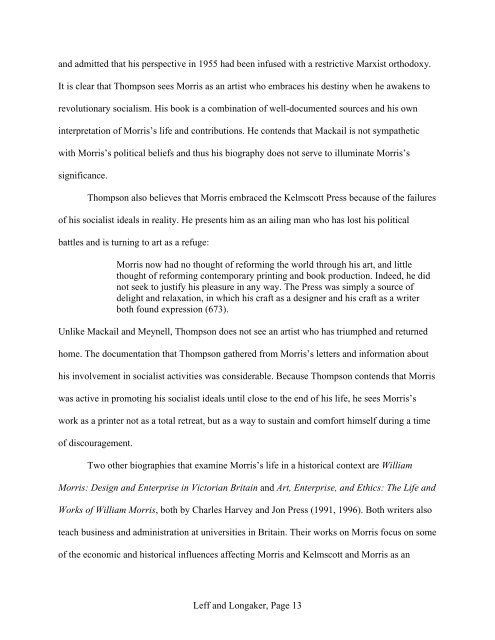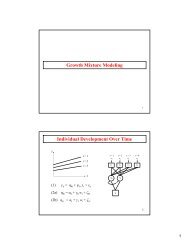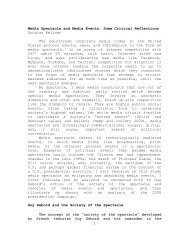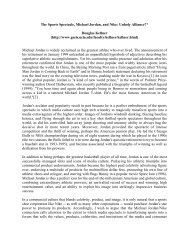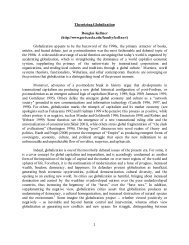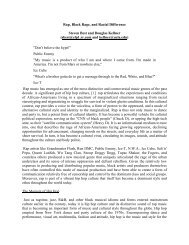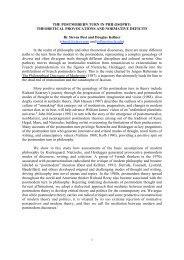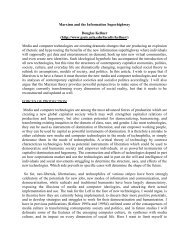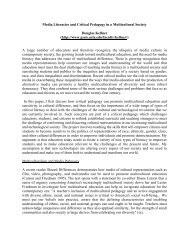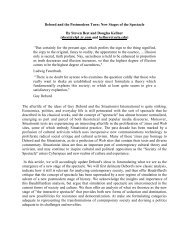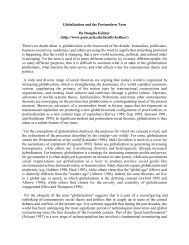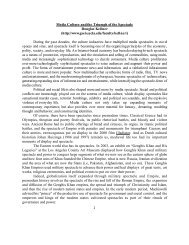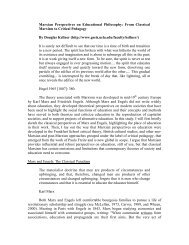Rachel Leff and Rachel Longaker IS281 Professor Maack ... - Ucla
Rachel Leff and Rachel Longaker IS281 Professor Maack ... - Ucla
Rachel Leff and Rachel Longaker IS281 Professor Maack ... - Ucla
Create successful ePaper yourself
Turn your PDF publications into a flip-book with our unique Google optimized e-Paper software.
<strong>and</strong> admitted that his perspective in 1955 had been infused with a restrictive Marxist orthodoxy.<br />
It is clear that Thompson sees Morris as an artist who embraces his destiny when he awakens to<br />
revolutionary socialism. His book is a combination of well-documented sources <strong>and</strong> his own<br />
interpretation of Morris’s life <strong>and</strong> contributions. He contends that Mackail is not sympathetic<br />
with Morris’s political beliefs <strong>and</strong> thus his biography does not serve to illuminate Morris’s<br />
significance.<br />
Thompson also believes that Morris embraced the Kelmscott Press because of the failures<br />
of his socialist ideals in reality. He presents him as an ailing man who has lost his political<br />
battles <strong>and</strong> is turning to art as a refuge:<br />
Morris now had no thought of reforming the world through his art, <strong>and</strong> little<br />
thought of reforming contemporary printing <strong>and</strong> book production. Indeed, he did<br />
not seek to justify his pleasure in any way. The Press was simply a source of<br />
delight <strong>and</strong> relaxation, in which his craft as a designer <strong>and</strong> his craft as a writer<br />
both found expression (673).<br />
Unlike Mackail <strong>and</strong> Meynell, Thompson does not see an artist who has triumphed <strong>and</strong> returned<br />
home. The documentation that Thompson gathered from Morris’s letters <strong>and</strong> information about<br />
his involvement in socialist activities was considerable. Because Thompson contends that Morris<br />
was active in promoting his socialist ideals until close to the end of his life, he sees Morris’s<br />
work as a printer not as a total retreat, but as a way to sustain <strong>and</strong> comfort himself during a time<br />
of discouragement.<br />
Two other biographies that examine Morris’s life in a historical context are William<br />
Morris: Design <strong>and</strong> Enterprise in Victorian Britain <strong>and</strong> Art, Enterprise, <strong>and</strong> Ethics: The Life <strong>and</strong><br />
Works of William Morris, both by Charles Harvey <strong>and</strong> Jon Press (1991, 1996). Both writers also<br />
teach business <strong>and</strong> administration at universities in Britain. Their works on Morris focus on some<br />
of the economic <strong>and</strong> historical influences affecting Morris <strong>and</strong> Kelmscott <strong>and</strong> Morris as an<br />
<strong>Leff</strong> <strong>and</strong> <strong>Longaker</strong>, Page 13


